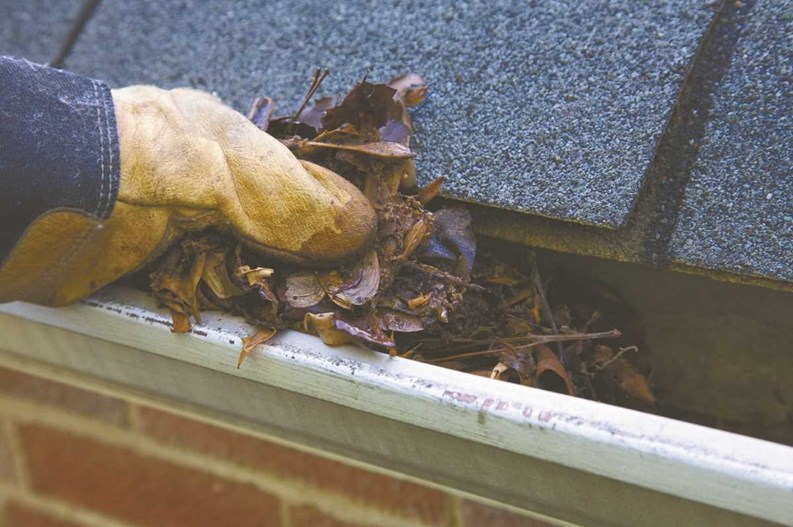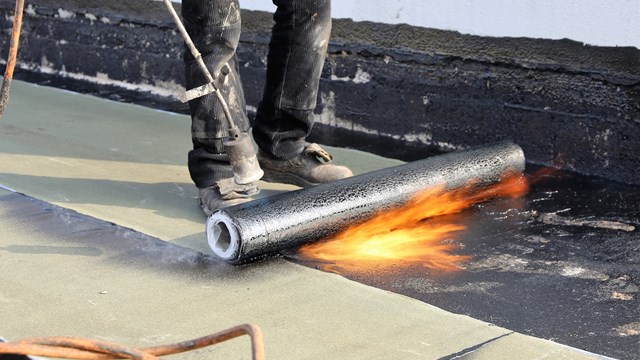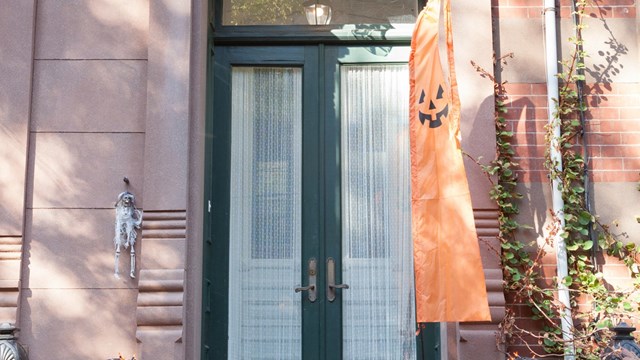Snow, ice, freezing, thawing, refreezing all take such a toll on New Jersey properties that it’s practically a cliché—but it’s a cliché that condo and HOA board members and managers have to deal with every spring.
Harsh weather and lack of regular maintenance during the winter can take a toll on nearly every aspect of an HOA’s buildings and grounds. With all runoff, controlling storm water and snowmelt on the ground becomes a major challenge.
And then there are the weather wild cards, as was the recent case with Hurricane Sandy, a superstorm that devastated New Jersey, especially its shoreline, and caused major headaches for New Jersey’s HOAs and homeowners. The hurricane’s effects were severe, with economic losses to businesses of up to $30 billion. Over two million households in the state lost power in the storm, 346,000 homes were damaged or destroyed and 34 people were killed. Storm surge and flooding affected a large swath of the Garden State. Governor Chris Christie said the losses caused by Sandy were "going to be almost incalculable...The devastation on the Jersey Shore is probably going to be the worst we've ever seen.”
Recovery from this storm will take years, perhaps decades for some New Jersey properties. According to Russell Fernandes, a professional engineer with Becht Engineering in Liberty Corner, right now it’s still a wait-and-see proposition. “The engineering community has been making inspections on behalf of homeowners and preparing specs and designs for the larger communities. A lot of the homeowner associations are still waiting on insurance settlements. The recovery is going slowly and it’s going to take a long time. The damage is unprecedented for this area. It’s going to take a long time to get back to anything close to normal.”
Steven Morris, the president of Morris Engineering in Somerville, also noted that the progress varies by community. “Some towns had a greater delay of allowing people to get back in there. And then it also depends on how individual HOA’s condo associations and property owners are approaching the repairs: some are slow to jump on it and some are getting aggressive to make the repairs.
“As far as what the engineering community is doing I think we are actively working with the communities to facilitate their claims with their insurance company.” He noted that companies are making any short term emergency repairs to stabilize conditions, and also looking at the big picture of what the repair has to be. Things are being fixed, and HOAs are developing a plan of action to get the community back on its feet, he says.
One important lesson from Sandy, he says, is like the Boy Scouts, “be prepared.”
“The biggest thing is preparation. Know what your insurance policies are going to cover and what they’re not going to cover. Have good relationships with your engineers and your key contractors so that when you need them to come out you’ve already got an arrangement for them to come out.”
Seasonal Walk-Throughs
Experts stress the importance of seasonal walk-throughs, and that a property manager and at least two board members participate in it. The more sets of eyes—and a clear understanding board members have of their own property—the better for the HOA as a whole.
“Typically it is something that the management company would initiate,” says Fernandes. “Often it could be at the behest of the board or unit owners that there is an issue but a manager’s role is to inspect the property periodically regardless of the season.”
Even the most well-managed associations need to take winter precautions, especially in the colder climates of the Northeast. The walk-through should look at the common areas; the building components, such as roofs, gutters, windows, siding, trim, decks, garages, HVAC units, elevators; the on-site surfaces, such as paving, concrete, fencing, lighting; all landscaping and equipment, such as timers, controllers, and sprinkler heads; and recreational components, such as pools, spas, saunas, playgrounds, tennis courts, golf courses, exercise rooms, and clubhouse.
While each area has its own special concerns, checking the building components and safeguarding your outdoor landscape are vital. A good roof is essential; if you suspect any leaks or problems have an inspection done by a professional. However, you can scrutinize your buildings to make sure nothing on the roof is loose, broken, rusted or in need of repair. The gutters and the downspouts should be checked to make sure they're not clogged with branches, leaves and debris. Is the siding and trim holding up? Are there any nails that need replacing or surfaces that require painting. Do areas around windows need repainting or caulking? Decks should be checked for dry rot and drainage or moisture issues. Damaged wood should be replaced and joists and fencing checked for any problems.
Next, survey the grounds. Check the common area lighting for broken, cracked or rusting fixtures. Check the asphalt and sidewalks for broken pavement in need of repair. Moss and algae growth can also be slip or trip hazards that should be remedied, he says. Look for evidence of ponding along building foundations and walkways. In cold weather, this can lead to major problems. Clean out ground and storm drains to improve drainage, he adds.
"Hopefully if you're hiring a good property management company, they'll be the vehicle to get everybody out there,” says Rob Hastings, vice president of operations for MAMCO Property Management in Mt. Laurel. "When we go through our properties, I generally like to get at least one board member to come along."
“Usually,” adds Robert Teeling, an executive director for the Northern New Jersey region of Wentworth Property Management, “the manager and the vendor who did the snow removal walk the site first for any snow removal damage. Then the manager and if a board member wants to walk the site for other damages. If there is a grounds committee, they sometimes do it as well.”
"When we do the inspections, we generally identify the safety-related items first," Hastings says. "And then property damage second. If there is property damage, we'll contact the insurance company if necessary. If not, we'll go out and entertain at least two to three bids. We get this stuff taken care of as soon as we can in the early spring and move on from there."
Another important factor is that the information during the walk-through is communicated and reported back to the entire board for review. Using modern technology, such as digital photography, you can actively convey what needs to be fixed through images.
What’s Up, on the Roof?
There is an old saying that you need a good roof over your head. And it’s not just shingles and flashing that need attention. The rubber membrane on a flat roof should be inspected, any mechanical equipment or HVAC equipment should be checked to ensure that there are no leaks, and gutters and downspouts should be cleaned and any repairs made. A pitched roof should be inspected for any loose shingles, flashing or water leaks.
One perennial cold-weather problem for suburban associations is ice damming, which is the term used to describe what happens when ice forms in roof gutters and downspouts and creates a dam, resulting in a buildup of water.
“An ice dam,” according to Mitch Frumkin, PE, RS, GCP, the president of Kipcon, Inc., an engineering firm in North Brunswick, “is the ridge of ice that builds up along the edge of a roof and clogs the gutters. Normally, snow buildup melts and flows off the edge of the roof or through the gutters. When air temperature is very low, however, this water refreezes at the edge and in the gutters because these areas are not warmed by any attic space below them. This rim of ice traps runoff water, which then backs up on the roof, travels under the shingles and leaks inside.”
Preventing an ice dam is usually as simple as controlling ventilation and heating, continues
Frumkin. “The best way to prevent ice dams and curtail water infiltration problems is to decrease the heat in the attic space below the roof deck. The cooler the attic is, the less melt-off occurs. Improving insulation and ventilation is one of the most effective means of keeping the temperature of the space directly below the roofing at an appropriate level. This area should be nearly the same temperature as outside.”
Ice and cold also affect plumbing and pipes, says Fernandes. “Just recently I’ve seen an uptick in frozen pipes because of the cold snap. Sometimes they are common elements; sometimes they are unit owner’s pipes. Many times even unit owner pipes when they freeze can burst and affect common elements. Usually that’s an insurance claim quite often associations have to make initial repairs and they have to repair for that.”
Safety is also a big issue, says Fernandes. “First and foremost, safety has to be maintained. Potholes or broken sidewalks should be at least temporarily repaired. You can’t do a permanent repair in this type of weather but they should at least be temporarily repaired. A pothole can be filled with a cold patch so it is not a hazard. But once the weather turns around it needs to be permanently repaired.”
Also look for snow and ice buildup on entrance canopies, which could pose a danger to passersby with melting and refreezing issues. Also water drains onto sidewalks below creating slippery surfaces for pedestrians.
A Little Groundskeeping
At more suburban properties, some post winter tasks also include turning on the lawn spigots and getting the irrigation systems going. Another major issue is keeping your grounds in good repair, your landscaping, trees and shrubs vibrant, and ensuring that common areas, paved areas and parking lots look their best.
Fernandes says that there are a few key areas to consider when maintaining curb appeal. “The first is to maintain curb appeal because the boards and managers have to always consider that unit owners are trying to sell their units and the most important thing is what the building looks like from the curb.”
Survey the grounds, he says. “Landscaping, in terms of plantings. If there is any lawn area, you need to make sure that it is well maintained and green. Make sure that shrubs are not left to die—the same is true for a townhome community just on a broader scale. You always want your lawns to look lush. Roadway and parking lots also should be well maintained and not full of potholes or cracks,” Fernandes says.
Also, says Morris, another important tip is to clean your community’s catch basins after the winter. This will help your storm water system, so that your water will flow off the site properly.
Another item to keep in mind, adds Morris, is possible snowplow damage. After a snowfall, private contractor plows may have unintentionally damaged turf and lawns, which then have to be repaired. Usually the contractor that caused the damage is responsible for remedying the problem. Another good idea, the experts say, is to have a landscape committee in place. In this way, there is someone to oversee the grounds and ensure that the landscaping is always up to par.
Bringing a winter-weary property into shape can be smoother and more stress-free when managers tap into their talented board members and unit owners, and hire the appropriate professionals to take on the winter repair and cleanup tasks every community needs to prepare for spring.
Marie Auger is a Massachusetts-based freelance writer. Managing Editor Debra A. Estock and Staff Writer Christy Smith-Sloman contributed to this article.







Leave a Comment